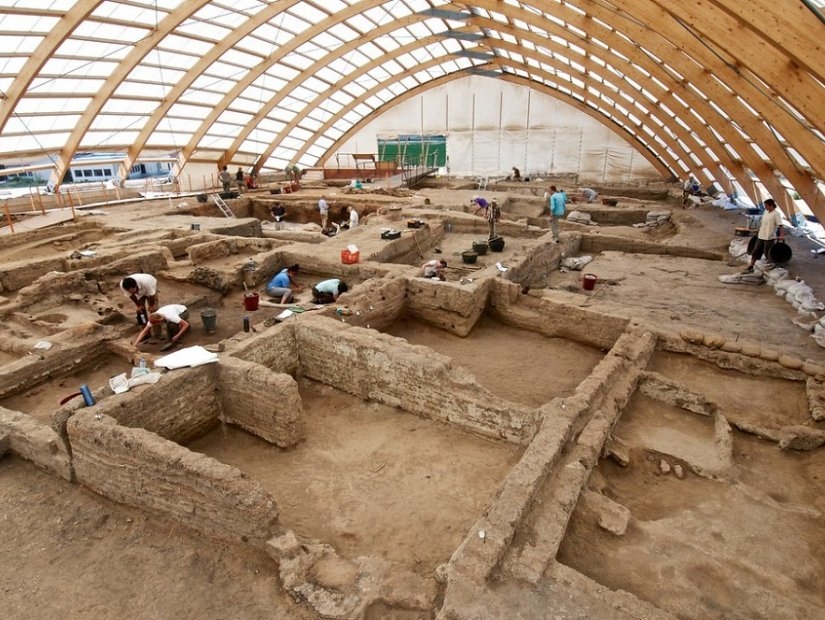Blog
Çatalhöyük: Cradle of Civilization
Çatalhöyük: Cradle of Civilization
Çatalhöyük: Cradle of Civilization
One of the earliest settlements in the Neolithic Era, Çatalhöyük managed to both answer and raise questions about the history of humanity. Located in the Konya province of Turkey, Çatalhöyük is one of the most important ancient sites on the UNESCO World Heritage List since 2012. Çatalhöyük is neither the largest nor the oldest ancient site of human settlement. Still, it holds a principal value as it is one of the initial signs of the transition from a hunter-gatherer lifestyle to a more plant-based stabilized lifestyle. Çatalhöyük’s history depends on the transformation of humanity, from nomads to settlers. The archaeological site of Çatalhöyük is open for everyone across the globe who wishes to take a view into this fantastic settlement that once had almost 10,000 people, tracing back to 9,000 years ago.
About Çatalhöyük
The site was first excavated by James Mellaart, an English archeologist, in 1958. Later on, his team worked in this site until 1965, revealing 18 successive human settlement layers. However, the progress of Mellaart’s studies came to an end with its affairs with the Dorak Scandal. In 1993, further investigations of the site were started again by the leadership of Cambridge University. As of our day, excavations and research about Çatalhöyük are still done by various universities both in Turkey and across the globe.
Buildings of Çatalhöyük have gathered around with no other different public buildings serving any public manners. Almost all of the buildings were built in the same way and same size, excluding some that had larger rooms and murals. Çatalhöyük was able to hold 10,000 people at maximum but had an estimated average population between 5,000 and 7,500. The complex consisted of buildings clustered together firmly. As there were no streets in the settlement, homes were accessed through holes and doors. Ladders and stairs were used in each house to reach the rooftops, which also enabled access to each other. Almost every residence had a spare room for storage, cooking stations, wooden decors, and crafting stations. Archeologists were able to identify a small amount of trash inside buildings, signing records of a clean environment in this society. There was a high amount of food waste, middens, and rubbish piles located in the settlement’s outer parts, signifying the importance of being clean in the settlement of Çatalhöyük.
The Society in Çatalhöyük
Human remains were found in pits beneath floors and hearths used for cooking in this settlement, thought to be part of their rituals. Bodies of the deceased were commonly put in little baskets and wrapped with sheets or mats. Some researchers inside archeological sites acknowledged that most of the bodies were exposed to open air before the burial. While there were discs or spherical objects stuffed in women’s graves, there were stone axes found inside men. These sign that people who lived within Çatalhöyük had transcribed and lived with a common faith and took part in rituals.
Both in exterior and interior walls, there were many murals and figurines were found. Clay figures of women were among the most commonly found on the site. The Seated Women of Çatalhöyük, currently exhibited in Museum of Ancient Civilizations in Ankara, is one of the most renowned figurines found in Çatalhöyük.
The Importance of Women in Çatalhöyük
One of the striking features of Çatalhöyük was its common usage of female figurines. According to archeologists, these female figurines were seen as a deity to a higher self. Such eminence of female figures and signs of power suggest that the settlement of Çatalhöyük had a matriarchy. Still, most of the researchers argue that there was a balance of power concerning men and women.
As almost all of the houses, burials, and living conditions were inspected as equal in each site in this settlement, it is safe to assume that Çatalhöyük had an egalitarian society in which all humans were in the same conditions with equal rights facing the same difficulties.
With such amazing information and mesmerizing rich content, Çatalhöyük manages to attract the attention of many visitors. If you ever visit Konya, make sure to pay a visit to Çatalhöyük.


